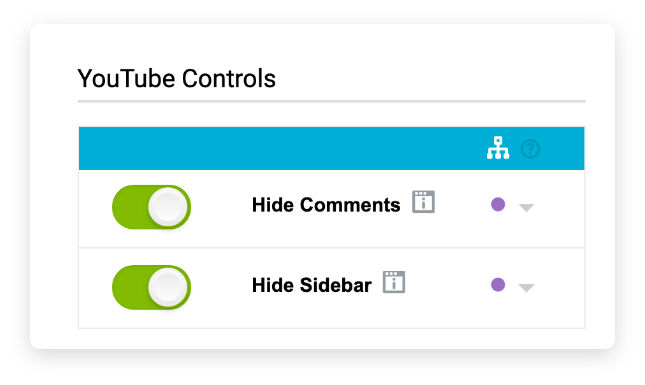What is cyberbullying?
Simply put, cyberbullying is bullying with the use of digital technologies. This online cyberbullying has become increasingly common, especially among teenagers, as the digital sphere has expanded and technology has advanced. Cyberbullying can take place on social media, messaging platforms, gaming platforms, mobile phones, and more.
How can you prevent cyberbullying in school?
One of the most effective ways to prevent cyberbullying in schools is to talk about it. When adults respond quickly and consistently to bullying behavior, they send the message that it is not acceptable. Research shows this can stop cyberbullying behavior over time.
And while technology has given rise to another form of bullying, it can also be used to help prevent cyberbullying in schools. We’ll explore solutions for preventing cyberbullying further below, but first let’s examine current cyberbullying and harassment trends online:
- Over 22% of students reported being cyberbullied recently.
- The highest cyberbullying participation rates occurs between the ages 12 and 15.
- Victims of cyberbullying report higher rates of depression than other forms of bullying.
- Middle and high school students who have been cyberbullied are more likely to struggle in many areas, from academics to mental health.
- Young people who experience cyberbullying are at greater risk of self-harm and suicidal behaviors than those who don’t.
- Only 1 in 10 teens will inform an adult of their cyberbullying abuse.
Lightspeed Systems conducted a survey of over 200 parents and K-12 IT professionals about the prevalence of cyberbullying in K12 schools and found:
- Over 67% of IT professionals said cyberbullying has increased at their school thanks to technology.
- 95% of parents said that cyberbullying is a bigger problem today than it was five years ago.
- Nearly 56% of IT professionals stated bullying is happening more frequently at their school than it did five
years ago. - 60% of parents said that schools have the biggest role in stopping cyberbullying.
- 7th graders were the most frequent targets of cyberbullying and the grade most likely to cyberbully their
classmates. - Over 26% of IT professionals said cyberbullying happens frequently at their school.
- Over 80% of respondents said that cyberbullying sometimes occurs on school-owned devices.
- Fewer than half of the school IT workers we surveyed said their school is always monitoring user activity to
curb cyberbullying.

How to detect cyberbullying in school in real time
Lightspeed Alert™ detects bullying and cyberbullying in real time, helping schools intervene in cyberbullying before a situation escalates to violence or self-harm. With the Bullying topic enabled, a notification will be sent when a school student uses racial slurs, sexual slurs, or wishes violence or suicide on another student. Designated district and school safety administrators are alerted instantly of threats so they can step in before an incident occurs. Alerts for cyberbullying will also be sent to the Lightspeed Safety Specialist team for districts with Human Review enabled.
Reports from Lightspeed Alert’s software provide timelines and screenshots to help district administrators get the full picture of bullying and cyberbullying incidents for appropriate intervention.
How to prevent cyberbullying on social media
Preventing cyberbullying before it starts by allowing the use of social media safely with “read-only mode” to keep valuable content accessible to students, without the risks. With Lightspeed Filter™, you can allow or block social media sites such as Instagram, Pinterest, Facebook, and Twitter so it’s used by the right people, at the right times, in the right ways. These granular social media controls will help schools prevent access to common cyberbullying platforms while on school devices.


Flag terms related to cyberbullying
Detect signs of cyberbullying in your school with a customizable list of flagged terms to report on instances of students using inappropriate language and terms related to cyberbullying. Flagging these terms will help educators and school staff know who they need to talk to about cyberbullying and why that behavior is unacceptable.
Preventing cyberbullying in schools with appropriate use with app permissions
Ensure apps and tools are used appropriately—and not used as a means to cyberbully school classmates. Granular app permissions let you grant access to the right users for accessibility and messaging functions. Leverage reports to stay informed on appropriate student use of apps and their functions.


Block YouTube comments
Keep students safe and use YouTube as a learning resource by removing the comments sections and sidebars. This keeps students from reading or sending potentially malicious comments on YouTube with easy SmartPlay™ controls, so they can stay focused on the educational video.
